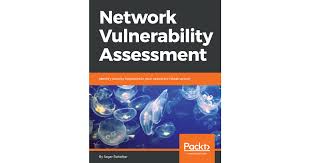In today's interconnected world, network security is paramount. Cyber threats are constantly evolving, and organizations must proactively identify and mitigate vulnerabilities to protect their critical assets and maintain business continuity. Network Vulnerability Assessment (NVA) plays a crucial role in this endeavor by systematically identifying and analyzing security weaknesses within an organization's network infrastructure.
Network Vulnerability Assessment: A Comprehensive Guide
1. Introduction
In today's interconnected world, network security is paramount. Cyber threats are constantly evolving, and organizations must proactively identify and mitigate vulnerabilities to protect their critical assets and maintain business continuity. Network Vulnerability Assessment (NVA) plays a crucial role in this endeavor by systematically identifying and analyzing security weaknesses within an organization's network infrastructure.
2. What is Network Vulnerability Assessment?
Network Vulnerability Assessment is the process of identifying, classifying, and prioritizing security weaknesses within an organization's network environment. This involves:
- Identifying Assets: Inventorying all network devices, including servers, workstations, routers, switches, firewalls, and other critical infrastructure.
- Vulnerability Scanning: Employing automated tools to scan the network for known vulnerabilities, such as missing patches, weak passwords, and misconfigurations.
- Threat Modeling: Analyzing potential threats and their potential impact on the organization.
- Risk Assessment: Evaluating the likelihood and potential impact of identified vulnerabilities.
- Reporting and Remediation: Generating detailed reports of findings and recommending appropriate remediation actions.
3. Types of Network Vulnerability Assessment
- Passive Scanning:
- Gathers information about the network without actively interacting with devices.
- Techniques include port scanning, service detection, and network mapping.
- Active Scanning:
- Proactively probes network devices and applications to identify vulnerabilities.
- Techniques include vulnerability scanning, penetration testing, and fuzzing.
- Internal Scans: Focus on vulnerabilities within the organization's internal network.
- External Scans: Assess the organization's external network perimeter, including internet-facing systems and web applications.
4. Benefits of Network Vulnerability Assessment
- Proactive Risk Mitigation: Identify and address vulnerabilities before they can be exploited by attackers.
- Improved Security Posture: Strengthen overall network security and reduce the risk of cyberattacks.
- Compliance: Meet regulatory and compliance requirements, such as PCI DSS, HIPAA, and GDPR.
- Reduced Downtime: Minimize the impact of security incidents by identifying and addressing potential disruptions.
- Cost Savings: Prevent costly data breaches, system downtime, and reputational damage.
5. Key Considerations
- Scope and Depth: Determine the scope and depth of the assessment based on the organization's specific needs and risk tolerance.
- Methodology: Choose appropriate assessment methodologies, including vulnerability scanning, penetration testing, and risk analysis.
- Tools and Technologies: Select the right tools and technologies, such as vulnerability scanners, penetration testing suites, and security information and event management (SIEM) systems.
- Qualified Personnel: Ensure that the assessment is conducted by qualified security professionals with expertise in network security and vulnerability assessment.
- Continuous Monitoring: Implement continuous monitoring and vulnerability management programs to ensure ongoing security.
6. Use Cases
- Compliance Audits: Meet regulatory and compliance requirements by demonstrating compliance with security standards.
- Risk Management: Identify and prioritize security risks to inform risk management decisions.
- Incident Response: Improve incident response capabilities by identifying and addressing potential attack vectors.
- New Technology Deployments: Assess the security implications of new technologies and applications before deployment.
- Mergers and Acquisitions: Conduct due diligence on the security posture of acquired companies.
7. References
- (Book) "Hacking: The Art of Exploitation" by Jon Erickson
- (Book) "Metasploit: The Penetration Testing Guide" by David Kennedy, et al.
- (Website) OWASP (Open Web Application Security Project): https://www.nist.gov/
- (Website) SANS Institute:
8. Conclusion
Network Vulnerability Assessment is an essential component of any comprehensive cybersecurity program. By proactively identifying and addressing vulnerabilities, organizations can significantly reduce their risk of cyberattacks, improve their security posture, and protect their critical assets.
Disclaimer: This white paper provides a general overview of Network Vulnerability Assessment. The specific requirements and approaches will vary depending on the individual organization and its specific needs.
This information is for general knowledge and informational purposes only.
